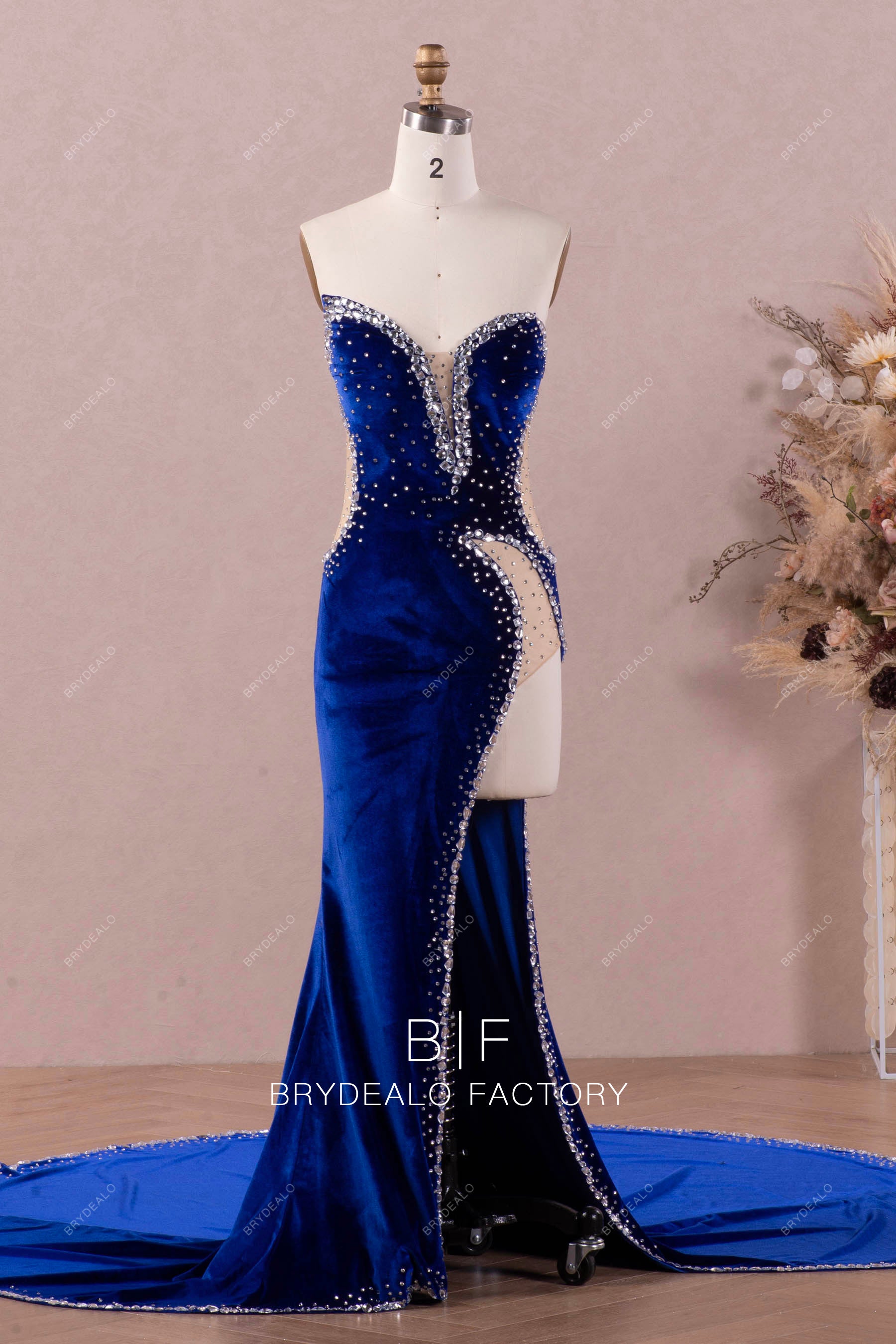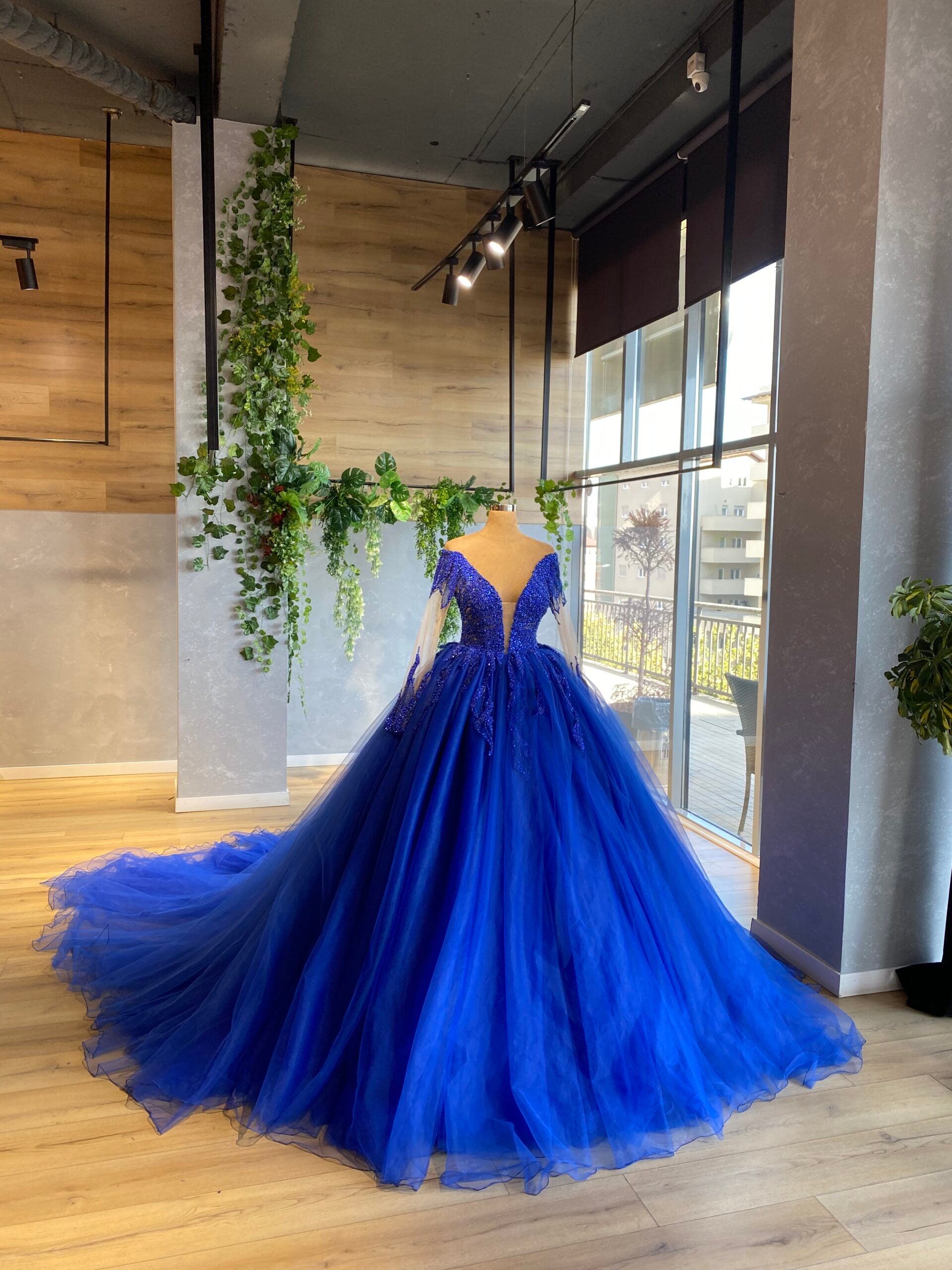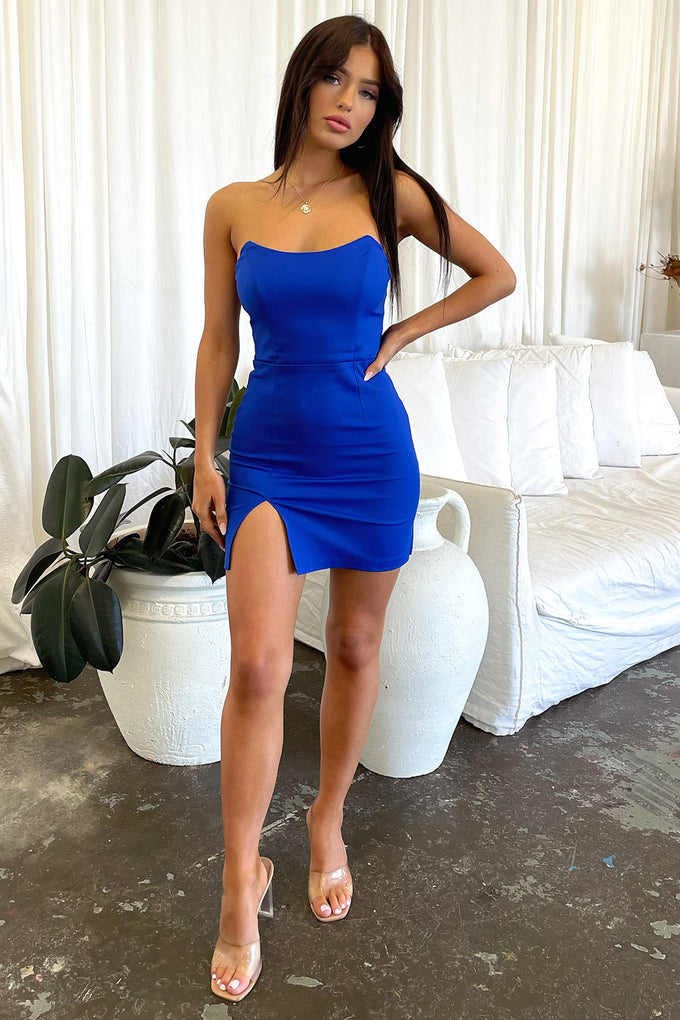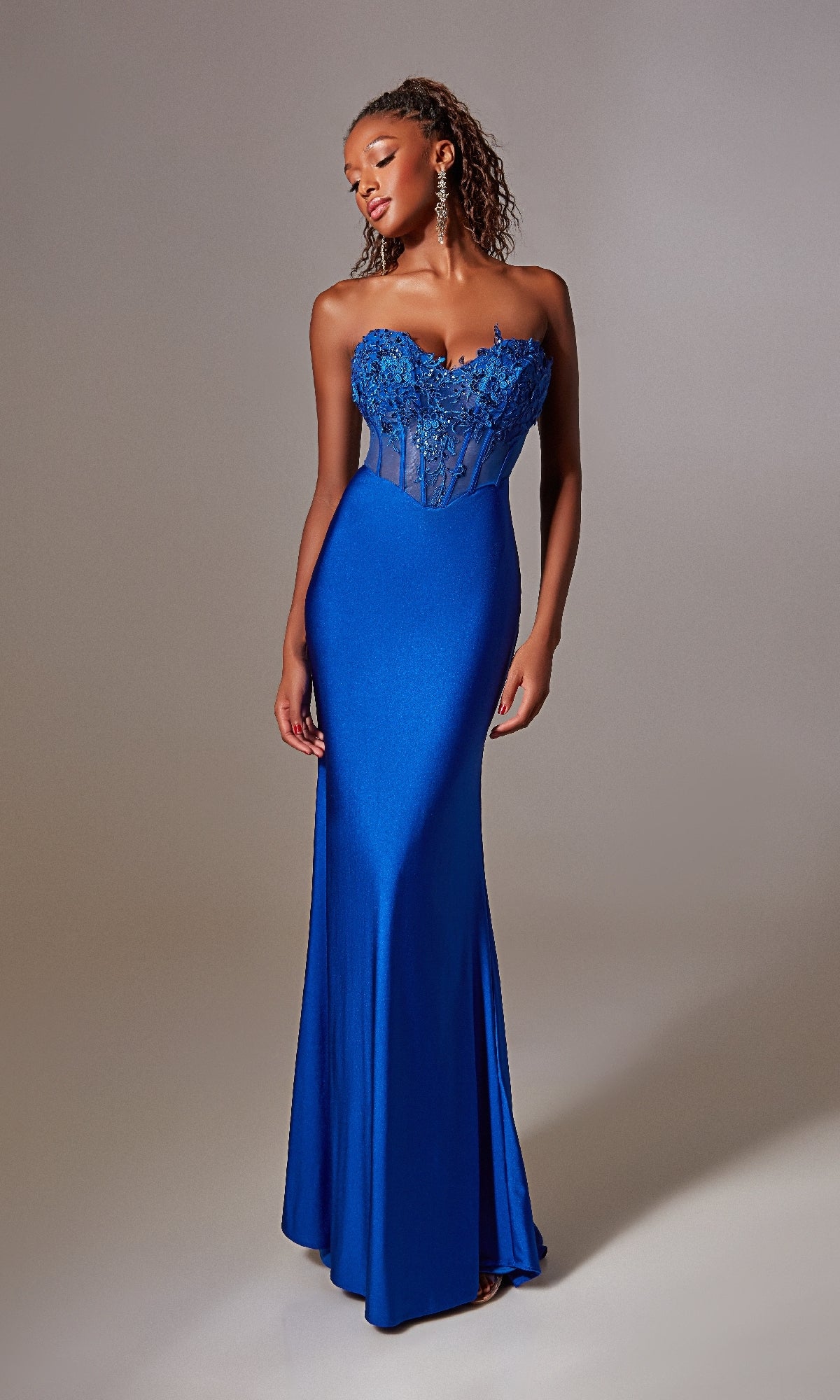Discover the Elegance of Royal Blue Dresses for Every Occasion
In the vast spectrum of colors, royal blue stands out as a hue that commands attention without overwhelming the senses. This deep, vibrant shade has long been associated with nobility, confidence, and sophistication, making it a perennial favorite in fashion circles. From red carpet events to intimate gatherings, royal blue dresses have proven their versatility and timeless appeal. The allure of this color isn’t merely subjective; it’s rooted in psychological and cultural foundations that span centuries. When you choose a royal blue dress, you’re not just selecting an outfit—you’re making a statement about poise and self-assurance that transcends temporary trends. The richness of this color complements various skin tones and body types, offering a flattering option for women seeking to enhance their natural beauty while projecting an image of refined elegance.
The Historical Significance of Royal Blue
The prominence of royal blue in fashion finds its origins in historical context and color psychology. Historically, this particular shade of blue was exceptionally difficult and expensive to produce, as it required rare lapis lazuli or complex dyeing processes. According to color theory research from institutions like Pantone Color Institute, blue hues often evoke feelings of trust, loyalty, and stability. The depth of royal blue specifically communicates authority and intelligence, which explains its traditional association with royalty and leadership across various cultures. In her book “The Secret Lives of Color,” Kassia St. Clair notes that until the 19th century, blue dyes were so valuable they were often reserved for depicting religious figures or nobility in artwork. This historical prestige continues to influence modern perceptions, giving royal blue dresses an inherent air of importance and distinction. The color’s psychological impact is further supported by scientific studies on color perception from universities such as Harvard, which have demonstrated how specific hues can affect both wearer confidence and observer perceptions in social interactions.

Royal Blue Dresses for Formal Events
When it comes to formal occasions, few colors rival the impact of a well-designed royal blue dress. The depth and richness of this hue create an immediate impression of elegance that is both striking and appropriate for events requiring sophisticated attire. From a practical perspective, the color photographs exceptionally well under various lighting conditions, making it a favorite among celebrities walking red carpets. Fashion historian and YouTube content creator Amber Butchart explains in one of her documented style analyses: “Royal blue possesses a remarkable ability to bridge the gap between traditional formality and contemporary fashion sensibilities. It doesn’t date in the way some trend-driven colors do, which means investment in a quality royal blue dress offers long-term value for your formal wardrobe.” The versatility of this color allows it to be adapted across different formal dress codes—whether it’s a floor-length gown for a black-tie event, a cocktail dress for a wedding, or an elegant sheath for a professional gala. The color’s intensity means that even simpler designs make a powerful statement, while more elaborate creations benefit from a color that can support substantial embellishment without appearing overwhelming.

Selecting the Perfect Royal Blue Formal Dress
Choosing the ideal royal blue dress for a formal event requires consideration of several factors beyond mere aesthetics. The fabric plays a crucial role in how the color presents itself—velvet intensifies the depth of royal blue, while silk charmeuse gives it a luminous quality that moves with the body. According to fashion experts from prestigious design schools like Central Saint Martins, the undertones of royal blue work particularly well with silver, gold, and rose gold accessories, providing numerous options for personalization. The structural elements of the dress should complement both the occasion and the wearer’s physique; A-line silhouettes offer universal flattery, while mermaid cuts create dramatic impact for those comfortable with more form-fitting styles. When considering necklines, jewel tones like royal blue are particularly enhanced by designs that frame the face and décolletage, such as V-necks or sweetheart cuts. Beyond visual appeal, practical considerations like comfort and movement should inform your selection, as formal events often involve extended wear periods and various activities from dining to dancing.
Incorporating Royal Blue into Casual Wear
The adaptability of royal blue extends far beyond formal occasions, making it an excellent choice for everyday elegance. Casual royal blue dresses offer a refreshing alternative to more common neutral tones while maintaining approachability for daytime settings. The psychological effect of wearing this color in casual contexts shouldn’t be underestimated; research published in the Journal of Fashion Marketing and Management indicates that wearing richer colors like royal blue in everyday situations can positively impact both mood and perceived confidence. Fashion influencer and Quora style contributor Elena Johnson notes: “Many women reserve their best colors for special occasions, but incorporating royal blue into your casual wardrobe elevates ordinary moments without appearing overdressed.” The key to successfully wearing royal blue in casual settings lies in fabric choice and styling—softer materials like jersey, cotton, or linen blends in this hue create a more relaxed aesthetic. Similarly, pairing a casual royal blue dress with simple sandals or sneakers and minimal jewelry creates a balanced look that feels intentional rather than formal. The color’s versatility means it transitions seamlessly from daytime activities to evening casual events with simple accessory changes.

The Science Behind Royal Blue’s Universal Appeal
The widespread appreciation for royal blue has foundations in both biological and cultural factors that make it universally flattering. From a scientific perspective, human color perception has evolved to distinguish blues particularly well—research from the University of California, Berkeley suggests that trichromatic vision in humans may have developed specifically to better differentiate reddish and bluish hues. This biological predisposition might explain why royal blue registers so distinctly to our visual system. Culturally, blue consistently ranks as the world’s favorite color in international surveys, with its darker shades like royal blue representing professionalism and reliability. Color psychologist Angela Wright, whose work has been implemented by global brands, explains in her Color Affects System: “Unlike many colors that have conflicting associations across cultures, blue maintains predominantly positive connotations worldwide, with darker blues specifically linked to intelligence, efficiency, and substance.” This cross-cultural consensus makes royal blue a safe yet impactful choice for diverse settings and audiences. The color’s wavelength—approximately 450-495 nanometers—places it in a range that the human eye processes with particular clarity, especially in contrast to warmer skin tones, creating a naturally flattering effect.
Royal Blue Through the Seasons
The perennial nature of royal blue makes it appropriate year-round, with seasonal adaptations primarily involving fabric weight and styling choices. During spring and summer, royal blue dresses in lighter materials like chiffon or cotton offer a rich alternative to pastels while maintaining seasonal appropriateness. The color’s depth creates beautiful contrast against blooming landscapes and sunny skies, making it particularly photogenic for seasonal events. In autumn and winter, royal blue serves as a vibrant counterpoint to typically muted seasonal palettes, with velvet, wool, or heavier crepe fabrics providing both warmth and sophistication. Fashion forecasters from WGSN (Worth Global Style Network) consistently include royal blue in their seasonal color predictions, noting its ability to bridge seasonal transitions while maintaining strong consumer appeal. The color works exceptionally well with seasonal accessories—pairing beautifully with metallic tones during holiday seasons and complementing autumn’s earthy palette without blending into it. This year-round versatility makes investing in multiple royal blue dresses for different seasons a practical approach to building a cohesive yet varied wardrobe.

Making Royal Blue Work for Your Unique Style
Personalizing royal blue to align with individual style preferences requires understanding how this commanding color interacts with different design elements. For those preferring minimalist aesthetics, the richness of royal blue allows for simple silhouettes to make a sophisticated statement without relying on embellishment. Conversely, individuals drawn to maximalist approaches can leverage royal blue as a foundational color that supports substantial pattern, texture, or accessory combinations without becoming visually chaotic. The color’s inherent balance between warmth and coolness makes it compatible with various metal tones—it harmonizes with both silver and gold accessories, unlike some colors that strongly favor one over the other. Styling advice from fashion institutions like the Fashion Institute of Technology emphasizes that royal blue serves as an excellent anchor color in a capsule wardrobe, pairing well with neutrals like black, white, gray, and navy, while also creating striking combinations with contrasting hues like coral, mustard, or emerald green. This adaptability means that a single royal blue dress can be styled multiple ways to create distinctly different looks appropriate for various occasions and personal style expressions.
Investment Value of Quality Royal Blue Dresses
Beyond immediate aesthetic appeal, well-constructed royal blue dresses represent a sound investment in one’s wardrobe due to their timeless quality and versatility. The color’s enduring popularity means it rarely appears dated in photographs or feels out of place at events, providing long-term value that justifies investment in quality construction and materials. From an economic perspective, cost-per-wear analysis frequently favors versatile pieces in enduring colors like royal blue over trend-driven items that quickly lose their relevance. Luxury fashion resale platforms like The RealReal consistently report strong demand for royal blue pieces from premium brands, indicating their retained value over time. Fashion economist Dr. Francesca Murialdo of London College of Fashion notes in her research on wardrobe economics: “Consumers achieve maximum value from garments that combine timeless coloring with classic silhouettes—the royal blue cocktail dress represents perhaps the optimal intersection of these factors for formalwear.” This investment perspective becomes particularly relevant when considering special occasion dressing, where the pressure to appear current must be balanced with practical budget considerations and the likelihood of repeated wear across multiple seasons or events.

The enduring appeal of royal blue in fashion represents more than mere color preference—it’s a reflection of this hue’s unique ability to communicate confidence, sophistication, and individuality across diverse contexts. From its historical associations with nobility to its scientifically-supported visual impact, royal blue possesses qualities that transcend temporary trends while adapting beautifully to personal style expressions. The versatility of royal blue dresses ensures their relevance throughout changing seasons and occasions, offering both immediate impact and long-term value for those who incorporate them into their wardrobes. Whether making a statement at formal events or elevating everyday wear, this distinctive color provides a foundation for sartorial expression that balances tradition with contemporary relevance, creating opportunities for women to project their best selves in any setting they encounter.






